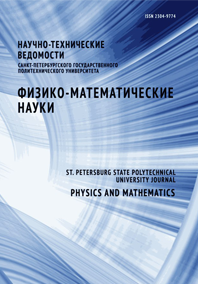Study of composite structure based on Ag and SiNWs
In this study, we propose a method for creating a composite structure consisting of an array of vertical silicon nanowires (SiNWs) and silver nanoparticles (AgNPs). To obtain SiNWs, the process of two-stage metal-assisted chemical etching of c-Si was used, and to obtain a uniform distribution of AgNPs in the SiNW array over their entire height, the atomic layer deposition method was used. The structural and optical characteristics of the AgNPs/SiNWs were studied by nondestructive spectroscopic ellipsometry and scanning electron microscopy before and after the preparation of the composite structure. The thickness (from 2.7 to 7.8 nm) of AgNPs layers deposited on a c-Si substrate and their complex dielectric functions were determined within the framework of the Drude-Lorentz model, on which resonance peaks of localized and bulk plasmons are observed. For an array of SiNWs, using a multilayer model and the effective Bruggeman medium approximation, the height of sublayers and the Si fraction in them, as well as the Ag fraction in the Ag/SiNWs composite structure, are determined. The c-Si:Ag composite structure has been characterized by comparing the calculation and experiment. The optical properties of Ag/SiNWs structures with complex spatial geometry are modeled using the COMSOL Multiphysics software package. The expected localization of
the electric field is observed on the surface and near the AgNP as a result of the excitation of localized plasmon resonance. The calculated enhanced factor reached 1010, which suggests that composite AgNPs/SiNWs structure is promising to use as a substrate for surface-enhanced Raman scattering.


